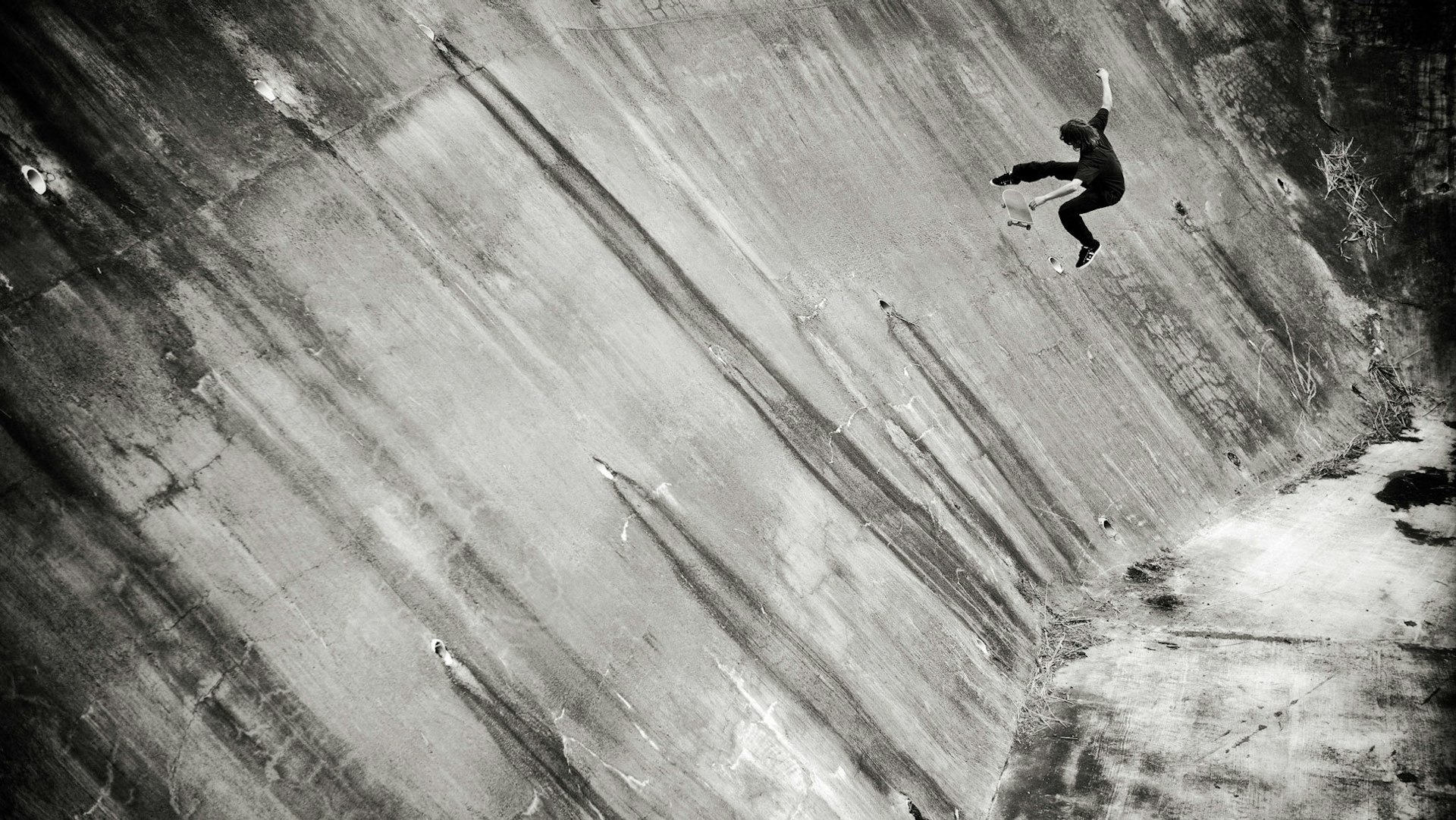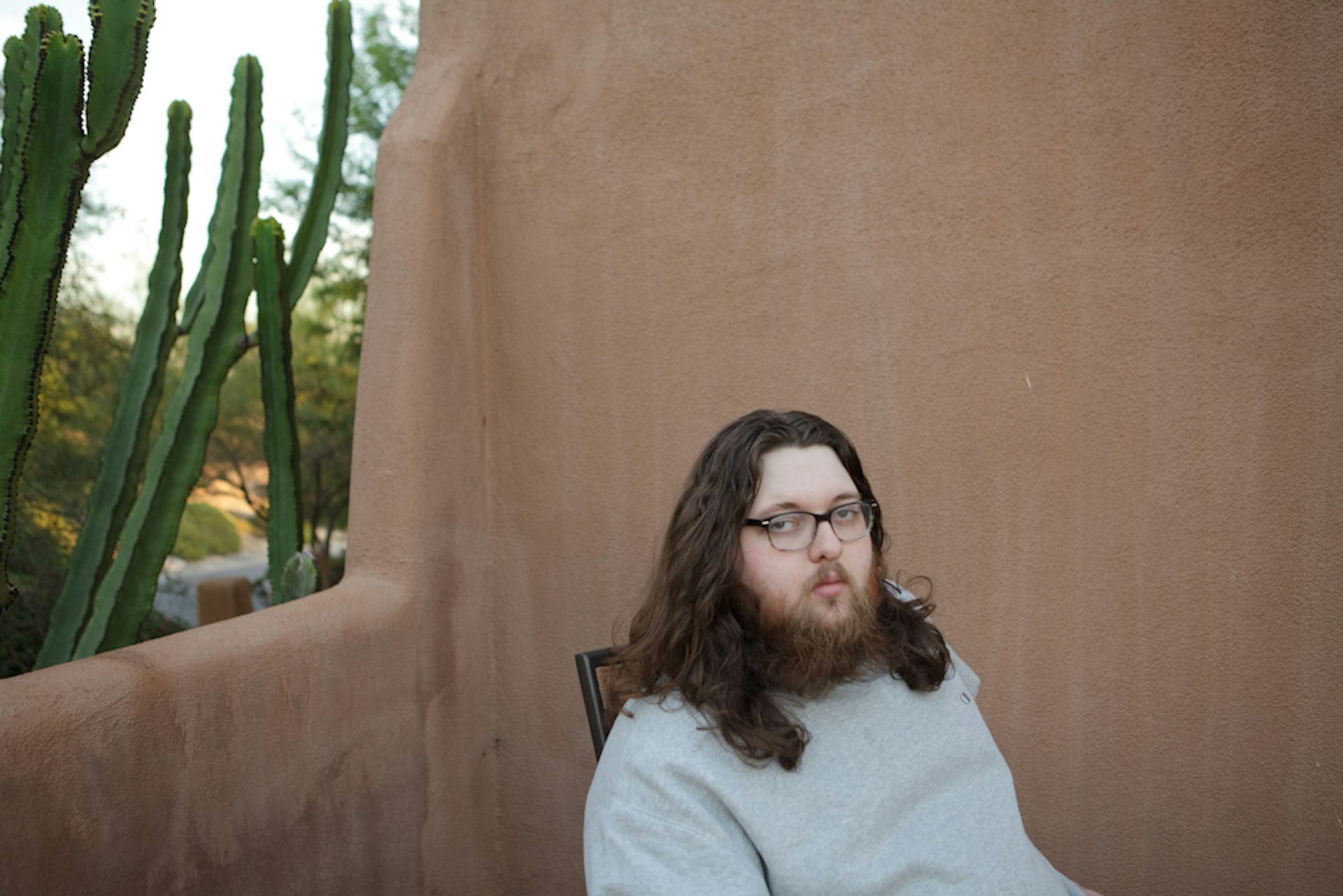
Brian Gaberman
- Text by Shelley Jones
- Photography by Brian Gaberman
OG skate and fine art photographer Brian Gaberman – who spends his down time tending to the farm he lives at with his family in North California – filtered through the last seven years of his work as brand photographer at Element to produce new book A Life In Transition that launched (for Europe) in Berlin on January 15.
The talented shooter, who became Slap staff photographer in San Francisco in the late 1990s, has nurtured a high-end, documentary style of skate photography that references the work of pioneers like J. Grant Brittain and Bryce Kanights as well as experimental cats like Thomas Campbell. The resulting images are less like snapshots and almost like paintings in their meticulous composition and expertly skilled execution, but Brian transitions between all the dichotomies in his life – film and digital, home and road, fine art and commercial – with a seamless sort of grace. In fact, this new book is, as well as many other things, a document of his remarkable, personal working journey. We caught up with the holistic photographer to find out more.
You took a few years off from skate photography to work on personal projects and your style evolved. What were those personal projects and how did they inform your work?
The time I spent away from skateboard photography was dedicated mainly to developing a few darkroom techniques and photographing around Kentucky. I was figuring out my approach to making glass negatives and was mainly photographing the landscape and my wife. At a point, I thought it was worth applying some of those techniques and philosophies to skateboard photography to see if it could make sense. To my great surprise, it did.
How does it work when you’re out shooting – are you always looking for interesting compositions and setting things up or do you just take a more backseat approach and jump in when you see something good?
I’m always looking at things as if they might be a photograph, much like any skater is always looking at the world in terms of possible skate spots, but I really just watch what is going on and try to anticipate what might be coming. Once I can tell how someone is going to skate a spot, I study the environment until I find the very best perspective I can. I really prefer to see how things evolve, as opposed to setting things up.
How did you edit seven years’ worth of material into A Life In Transition? Did you want the book to show an evolution or tell a story or is there another concept running throughout?
Figuring out the answer to that question was a huge challenge. There are so many pictures, that I really had to figure out what direction to go in or I’d lose my mind with possibilities. What I came to was a selection of some of my favourite images from being on the road with the team. My life on the road is the polar opposite of my life at home, and I realised that my whole life revolves around the process of adjusting and readjusting to being a travelling photographer one day, and a husband, father, farmer, artist, etc., the next. My biggest struggle is staying grounded. This book represents the working side of my life, and I hope to make a book of the home side of my life, so as a set, you could be holding the two halves of my life in your hands. Maybe it would help me make some sense of my own life.
You’ve said before that Sally Mann is an inspiration. What do you like about her work?
I like the ambiguity. There are questions lying in the shadows, and the people in her photographs seem to always be the source of light for the photograph.
How does working with Element progress your photography? Your personal aesthetic has notably influenced how they are perceived as a brand…
It has really challenged me in that I was never very comfortable photographing people I wasn’t very close with. I’ve had to really work on being comfortable with that over the years and I’m grateful for that. Also, working under someones direction was a new experience for me when I started with them. Trying to make a picture that you’re happy with AND the art director is happy with can be a delicate balance.
Who’s your favourite person to shoot?
I honestly love to shoot with anybody on the team because we’re all so close and they’re all so unique. But, over the years, I’d say Levi Brown and I have had a pretty good run of collaborating to get a result we’re both proud of.
And your favourite city/location too?
I don’t really have one. I try hard to be happy with wherever I am since it’s not usually in my control. Northern Spain did yield a good handful of my favourite photos though. Every skate spot seemed to have the perfect backdrop and the light was usually to my liking, which is rare.
Does the way you live – almost self-sufficiently on the farm – allow you to take more risks as a photographer? Less pressure to make money perhaps?
Nope. No matter how much food I grow, or animals I raise, or whether I’m having a good or bad year financially, we always seem to just get by. I’m not getting rich by saving money on lettuce and chicken, believe me.
What cameras do you use?
For work I use mostly Canon digital cameras. I always carry a Nikon FM2 when on the road as well. It was my first skateboard photography camera and still a favourite. When photographing personal work, I use a Super Speed Graphic that I’ve had for 16 years or more.
You’ve talked about giving yourself limitations with digital tools like photoshop, because things can get a bit CGI. Do you feel like you’re working in a different medium with digital, how has that affected the way you approach your photography?
At times it can feel like a different medium, but mainly in your soul. I just don’t walk away from a long day in front of the computer with the satisfied feeling I get when walking out of the darkroom. Two different animals completely. With regard to limiting myself, I think about how Richard Avedon said he worked “from a series of NOs”. Too many options can drive you crazy and you forget the point of what you’re trying to do, which is make people feel something. I like simplicity, and it can be a struggle to stay there with all the options that are available now in the computer. With a digital camera in my hand, I take way too many pictures and it makes editing much harder. When I’m holding my FM2, I shoot one or two frames and I’m usually happier with one of those. Go figure…
What would be your dream project to work on?
Two things come to mind: Documenting Tom Waits on tour and at his home for a year, and documenting Geoff Lawton, my permaculture idol, for a year. I’ve learned so much from both those people.
Do you have any advice for young photographers?
DO SOMETHING DIFFERENT! Please… If you want people to notice your work, don’t try to blend in with what you see in the magazines. AND (I’m stealing this from another idol of mine named Joel Salatin), “If it’s worth doing, it’s worth doing wrong.” Take chances and experiment. You learn more from failure than you ever do from success. Find a new way to see skateboarding or anything for that matter. In the long run, it’ll keep you interested.
What are your plans for the future?
Drink coffee.
You can see more of Brian’s work on his website. You can purchase A Life In Transition on the Element website.
